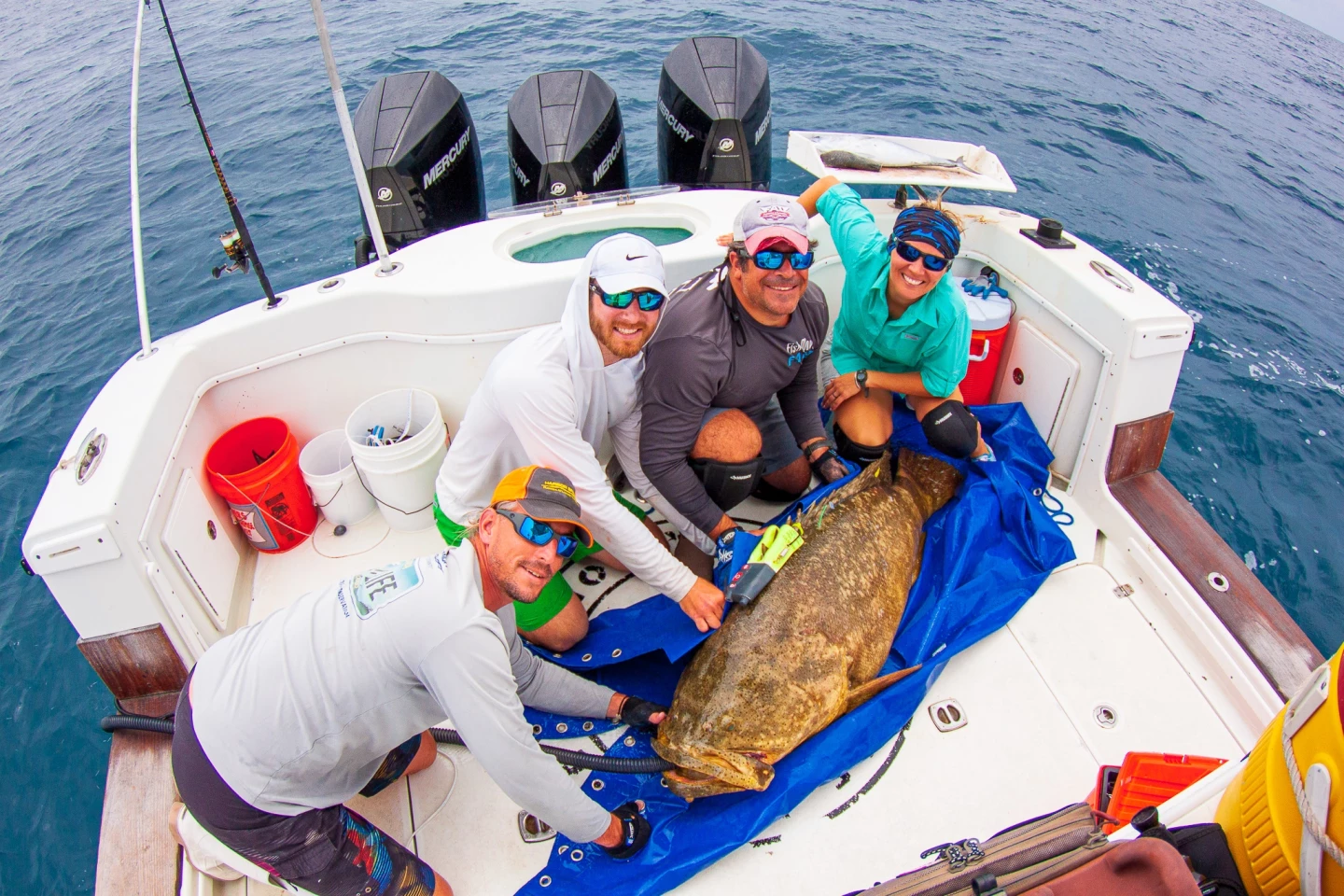Despite being related to the humble freshwater perch, the Atlantic goliath grouper grows to be huge – up to 8 feet long (2.4 m) and 800 lb (363 kg). Scientists have recently learned more about its behavior, using a new multifunctional high-tech tag.
For the study, a team from Florida Atlantic University captured six of the groupers from a canal on Florida's Hutchinson Island, and affixed one of the tags alongside the dorsal fin of each fish. After being measured and weighed, the groupers were then released back into the ocean.
Each battery-powered tag contained an inertial measurement unit (an accelerometer/gyroscope/magnetometer combo), a video camera, a hydrophone, water temperature/pressure/light sensors, plus VHF and satellite transmitters. As the fish proceeded to go about their usual business, all of those sensors continuously recorded data.
After three days, a timed-release mechanism caused each tag to come off of its host grouper and float to the surface. The device's transmitters were then used to locate it, so that all of its stored data could be retrieved and analyzed utilizing special machine-learning-based algorithms.
Among other things, that computer analysis was able to identify specific behavior patterns, based on telltale combinations of actions that were simultaneously recorded by the different sensors. Those behaviors had previously only been observed by divers in the wild, or in captive fish – neither method would have been as thorough or accurate as continuously recording the fish for three days, in their natural habitat.

The scientists were particularly interested in the timing, location and frequency of the fish's recorded "booming" vocalizations, which are used both in courtship and in conflict with other groupers. Because such sounds have previously been recorded using hydrophones that were fixed in one location, it has been difficult to determine how many of the fish were producing the booms. Utilizing the tags, however, the team was able to tell which groupers were booming at what time, and in what place.
"We developed a novel multi-sensor tag and a reliable attachment method, which can be applied to similar species around the world," says Asst. Prof. Matt Ajemian. "Knowledge of the fine-scale activity of goliath groupers can help scientists and others understand the ecology of this species, a key research need highlighted by the International Union for the Conservation of Nature."
The research is described in a paper that was recently published in the journal Sensors. You can see footage recorded by the tags, in the following video.
Source: Florida Atlantic University






